Sultan Bayezid I – URS 13 Shaban (AH 805)
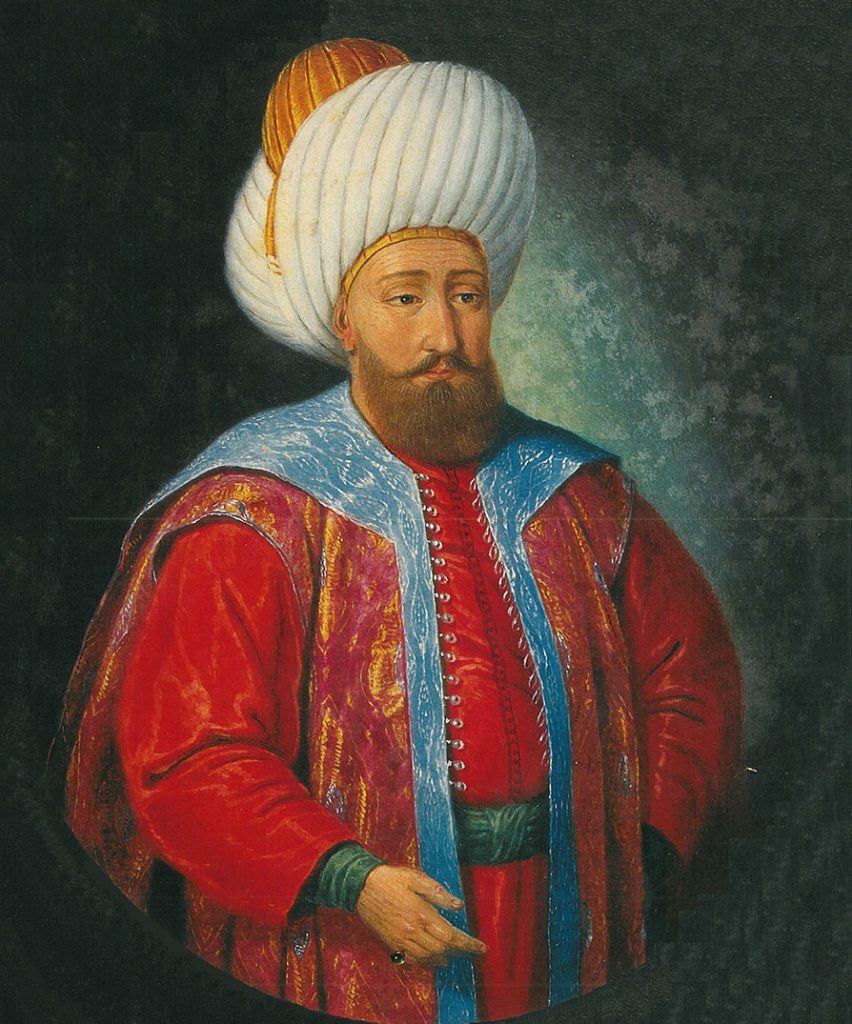
Sultan Bayezid I, (Yıldırım Bayezid – nicknamed Yıldırım “Lightning, Thunderbolt”); 1360 – 8 March 1403) was the Ottoman Sultan from 1389 to 1402. He was the son of Sultan Murad I and Gülçiçek Hatun.
Sultan Bayezid I built one of the largest armies in the known world at the time and unsuccessfully besieged Constantinople. He adopted the title of Sultan-i Rûm, Rûm being an old Islamic name for the Roman Empire. He decisively defeated the Crusaders at Nicopolis (Bulgaria) in 1396, and was himself defeated and captured by Timur at the Battle of Ankara in 1402 and died in captivity in March 1403.
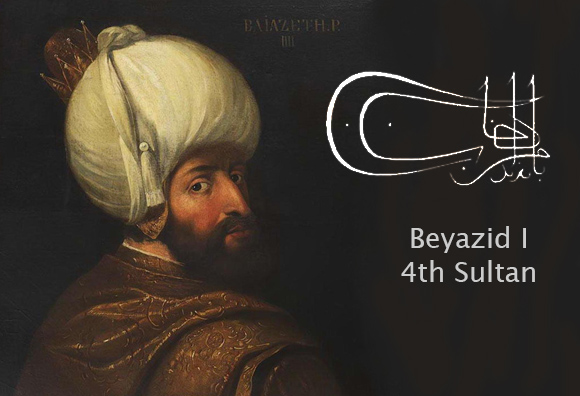
The first major role of Bayezid was as governor of Kütahya, a city that was conquered from the Germiyanids. He was an impetuous soldier, earning the nickname “Lightning” in a battle against the Karamanids.
Sultan Bayezid I ascended to the throne following the death of his father Murad I, who was killed by Serbian knight Miloš Obilić during (15 June), or immediately after (16 June), the Battle of Kosovo in 1389, by which Serbia became a vassal of the Ottoman Sultanate. Immediately after obtaining the throne, he had his younger brother strangled to avoid a plot. In 1390, Bayezid took as a wife Princess Olivera Despina, the daughter of Prince Lazar of Serbia, who also lost his life in Kosovo. Bayezid recognized Stefan Lazarević, the son of Lazar, as the new Serbian leader (later despot), with considerable autonomy.
The upper Serbia resisted the Ottomans until general Pasha Yiğit Bey captured the city of Skopje in 1391, converting the city to an important base of operations.
Meanwhile, the Sultan began unifying Anatolia under his rule. Forcible expansion into Muslim territories could endanger the Ottoman relationship with the gazis, who were an important source of warriors for this ruling house on the European frontier. So, Sultan Bayezid I began the practice to first secure fatwas, or legal rulings from Islamic scholars, justifying their wars against these Muslim states. However, he suspected the loyalty of his Muslim Turkoman followers, for Sultan Bayezid I relied heavily on his Serbian and Byzantine vassal troops to perform these conquests.
Campaigns
In a single campaign over the summer and fall of 1390, Sultan Bayezid I conquered the beyliks of Aydin, Saruhan and Menteshe. His major rival Sulayman, the emir of Karaman, responded by allying himself with the ruler of Sivas, Kadi Burhan al-Din and the remaining Turkish beyliks.
Nevertheless, Sultan Bayezid Ipushed on and in the fall and winter of 1390 overwhelmed the remaining beyliks — Hamid, Teke, and Germiyan—as well as taking the cities of Akşehir and Niğde, as well as their capital Konya from the Karaman.
At this point, Sultan Bayezid I accepted peace proposals from Karaman (1391), concerned that further advances would antagonize his Turkoman followers and lead them to ally with Kadi Burhan al-Din. Once peace had been made with Karaman, Bayezid moved north against Kastamonu which had given refuge to many fleeing from his forces, and conquered both that city as well as Sinop. However, his subsequent campaign was stopped by Burhan al-Din at the Battle of Kırkdilim.
From 1389 to 1395 he conquered Bulgaria and northern Greece. In 1394 Sultan Bayezid I crossed the River Danube to attack Wallachia, ruled at that time by Mircea the Elder. The Ottomans were superior in number, but on 10 October 1394 (or 17 May 1395), in the Battle of Rovine, on forested and swampy terrain, the Wallachians won the fierce battle and prevented Sultan Bayezid I’s army from advancing beyond the Danube.
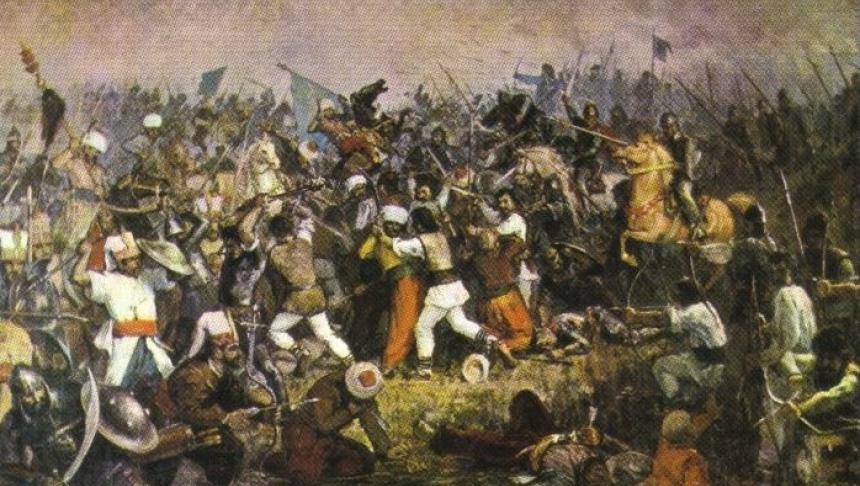
In 1394, Sultan Bayezid I laid siege to Constantinople, the capital of the Byzantine Empire. Anadoluhisarı fortress was built between 1393 and 1394 as part of preparations for the Second Ottoman Siege of Constantinople, which took place in 1395. On the urgings of the Byzantine emperor Manuel II Palaeologus a new crusade was organized to defeat him. This proved unsuccessful: in 1396 the Christian allies, under the leadership of the King of Hungary and future Holy Roman Emperor (in 1433) Sigismund, were defeated in the Battle of Nicopolis. Bayezid built the magnificent Ulu Cami in Bursa, to celebrate this victory
Thus the siege of Constantinople continued, lasting until 1402. The beleaguered Byzantines had their reprieve when Bayezid fought the Timurid Empire in the East. At this time, the empire of Bayezid included Thrace(except Constantinople), Macedonia, Bulgaria, and parts of Serbia in Europe. In Asia, his domains extended to the Taurus Mountains. His army was considered one of the best in the Islamic world.
In 1397, Bayezid defeated the emir of Karaman in Akçay, killing him and annexing his territory. In 1398, the sultan conquered the Djanik emirate and the territory of Burhan al-Din, violating the accord with Timur. Finally, Bayezid occupied Elbistan and Malatya.
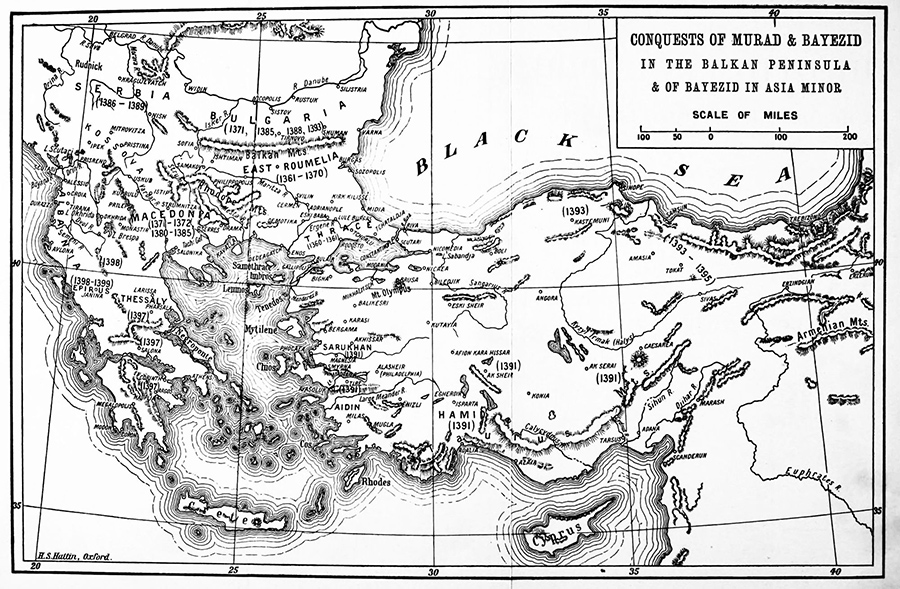
In 1400, the Turco-Mongol warlord Timur succeeded in rousing the local Turkic beyliks who had been vassals of the Ottomans to join him in his attack on Bayezid, who was also considered one of the most powerful rulers in the Muslim world during that period.
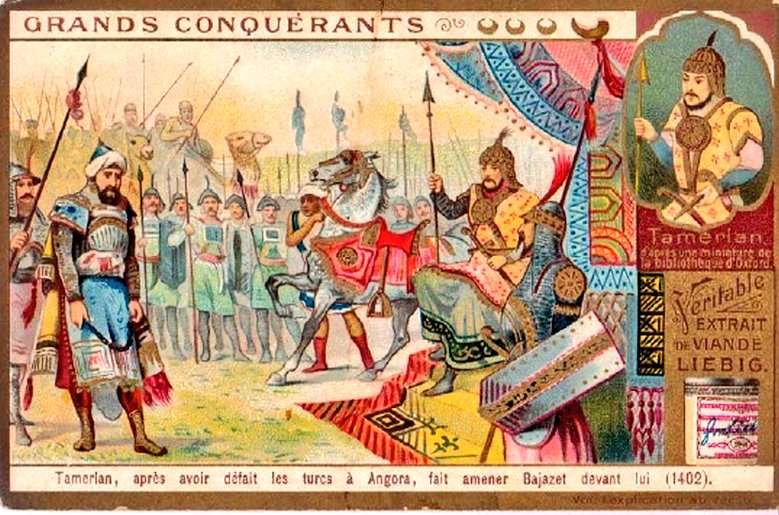
In the fateful Battle of Ankara, on 20 July 1402, Sultan Bayezid I was captured by Timur and the Ottoman army was defeated. Many writers claim that Bayezid was mistreated by the Timurids. However, writers and historians from Timur’s own court reported that Bayezid was treated well, and that Timur even mourned his death. One of Bayezid’s sons, Mustafa Çelebi, was captured with him and held captive in Samarkand until 1405.
Four of Bayezid’s sons, specifically Süleyman Çelebi, İsa Çelebi, Mehmed Çelebi, and Musa Çelebi, however, escaped from the battlefield and later started a civil war for the Ottoman throne known as the Ottoman Interregnum.
After Mehmed’s victory, his coronation as Sultan Mehmed I, and the death of all four but Mehmed, Sultan Bayezid I’s other son Mustafa Çelebi emerged from hiding and began two failed rebellions against his brother Mehmed and, after Sultan Mehmed’s death, his nephew Murat II.
Bir humarti Habib bir hurmati anzalta surat al-Fatiha.
Family
His mother was Gülçiçek Hatun who was of ethnic Greek descent.
Sultan Bayezid I had five consorts
- Sultan Hatun (m. 1381), daughter of Prince Süleyman Şah Çelebi of the Germiyanids and Mutahhare Abide Hatun;
- Devlet Hatun, mother of Mehmed I;
- Despina Hatun (m. 1389), daughter of Prince Lazar of Serbia and Princess Miliza;
- Hafsa Hatun (m. 1390), daughter of Prince Fahreddin Isa Bey of the Aydinids;
- Maria Hatun (m. 1394), daughter of Louis Fadrique, Count of Salona and Helena Asanina Kantakouzene.
Sons
- Şehzade Ertuğrul Çelebi; (1378 – 1400);
- Şehzade Süleyman Çelebi (1377–1411), co-sultan of Rumelia;
- Şehzade İsa Çelebi (1380–1406), governor of Anatolia;
- Şehzade Mehmed Çelebi (1382–1421), governor of Anatolia, and later sultan Mehmed I(1413–1421), with Devlet Hatun;
- Şehzade Musa Çelebi (1388-1413), sultan of Rumelia (1410–1413)
- Şehzade Mustafa Çelebi (1393–1422);
- Şehzade Yusuf Çelebi – son, converted to Christianity, changed his name to Demetrio;;
- Şehzade Kasım Çelebi – son, sent as a hostage to Constantinople together with his sister, Fatma Hatun;
Daughters
- Hundi Hatun – daughter, married to Damat Seyyid Şemseddin Mehmed Buhari, Emir Sultan;
- Erhondu Hatun – daughter, married to Damat Yakup Bey son of Pars Bey;
- Fatma Hatun – daughter, married to a Sanjak Bey;
- Oruz Hatun, who had a daughter named Ayşe Hatun;
- A daughter, married to Abu Bakar Mirza, son of Jalal ud-din Miran Shah son of Timur;

